
In fact, the answer to the question of whether a wasp has a sting is not as obvious as it might seem at first glance. It would seem that if wasps can sting, then they must have a sting, right? Yes, but not exactly...
The situation is as follows: every female does have a sting, but males do not. Considering that most individuals of the so-called paper wasps are just females, we can say that almost all those wasps that you meet in your summer cottage, balcony or attic of your house have a sting.

The sting of this insect is the main weapon of defense against enemies and attacks on large prey. At the same time, many adult wasps are strict vegetarians and use the sting only for the purpose of obtaining food for their larvae, or for self-defense and collective defense of the nest.

Interestingly, in the overwhelming majority of cases, when hunting, social wasps try to save poison, and their victims are killed with powerful jaws. The wasp has no teeth, but its well-developed jaws do an excellent job of gnawing even very dense chitinous covers of other insects.
Unlike social relatives, solitary species of wasps (for example, scoli) get food for their offspring almost always with the help of a sting.
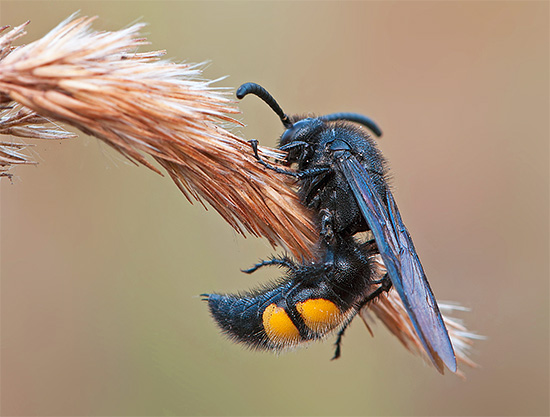
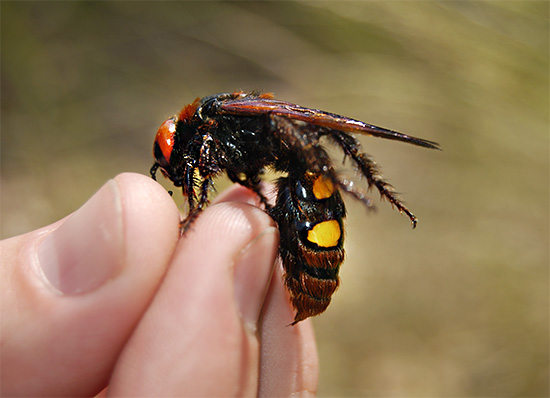
Despite such differences in the use of this organ, it is arranged in almost the same way for all wasps. As for the difference in the consequences of stinging by different types of wasps, it can be very, very significant, and is explained by differences in the composition of insect venoms.
Detailed anatomy: wasp sting under a microscope
The sting of a wasp is a long, strong, pointed organ connected to a poisonous gland and having a duct inside, through which poison from the gland is introduced into the body of the victim.
The photo below shows the sting of an ordinary wasp (Vespula vulgaris):

And here you can see what the sting of a hornet (Vespa crabro) looks like:
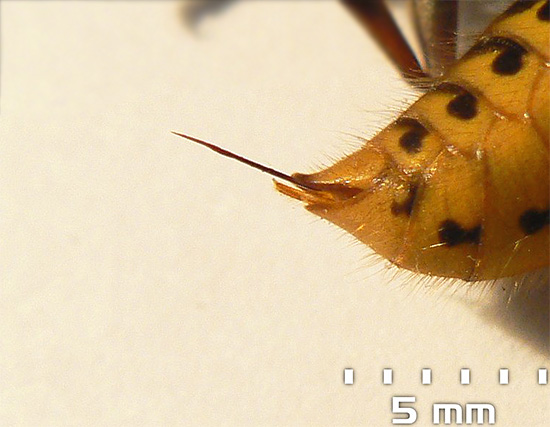
The sting is located in the back of the abdomen. In most wasps, in a calm state, it is drawn inward, and when bitten, it is removed due to contractions of special muscles.
Examining the sting of a wasp under a microscope, you can see that it has smooth walls and is translucent, but when viewed with the naked eye, this organ appears dark brown:
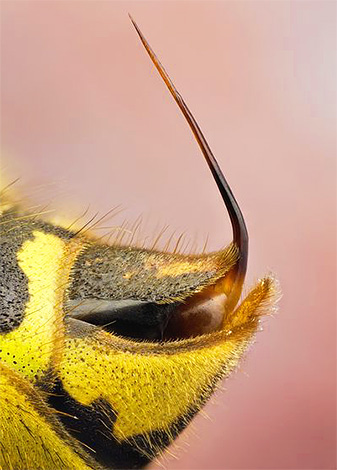
Interestingly, it is precisely in its smoothness that the sting of a wasp differs significantly from the sting of a bee: the latter has numerous notches on this organ. It is because of the presence of such notches that the bee sting is firmly held on the skin of the victim, like a harpoon. Being unable to get it, the bee flies away with partially torn out internal organs and subsequently quickly dies:
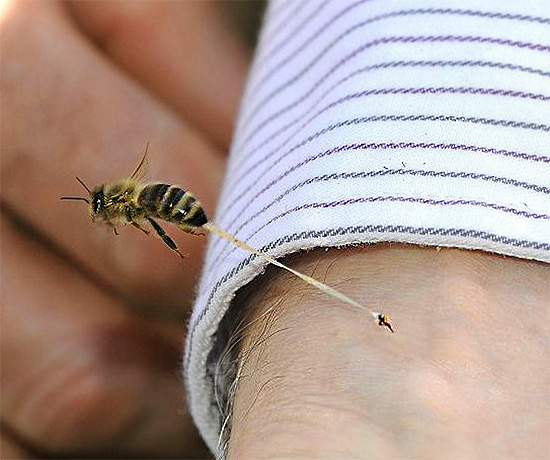
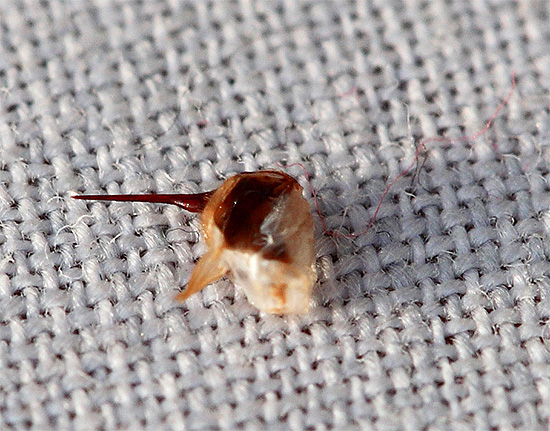
The photo below shows what a bee sting looks like under a microscope:
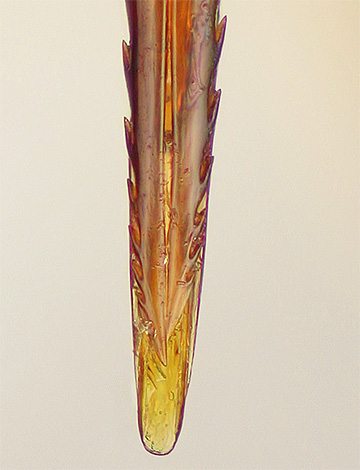
Structurally, the sting of the wasp consists of two elongated stilettos - it is they who pierce the integument of the victim's body. From the abdomen of the insect, they move forward along special formations called sleds.These sleds, in turn, are covered with several plates at the rear end of the wasp's body. When the wasp stings, the plates move apart, the sled moves slightly out of the abdomen, and stylets slide over them.
The video clearly shows how the wasp pushes the sting out of its abdomen:
The venom, when stung, flows out of the channel between the stylets and the sled. There is no such channel in the stylets themselves, and if the wasp does not have time to insert the sting to a sufficient depth, the poison does not enter the body of the victim.
The photo shows what the wasp sting looks like at the moment of partial extension from the abdomen:

It is interesting
The sting of a wasp is a modified ovipositor that has evolved into a formidable weapon. A similar ovipositor is found, for example, in grasshoppers and locusts (popularly it is also called a sword because of its characteristic shape), as well as in some other insects. But if in the same locust the ovipositor performs its direct functions and serves to remove eggs from the body of the female, then in wasps it was supplemented with a poisonous gland in the course of evolution, it became harder and stronger, and insects use it precisely for hunting and protection.
Riders - close relatives of wasps - are a kind of transitional group in this regard. Their ovipositor is not retracted into the body and can be very long. With its help, the insect pierces the integument of the victim and introduces its eggs into its tissues. Some riders can sting a person painfully: thus, their ovipositor also performs both functions - both protection and reproduction.
But the male wasps have no sting. Considering that the predecessor of this organ - the ovipositor - is the prerogative of only females, it becomes clear why males are devoid of sting.
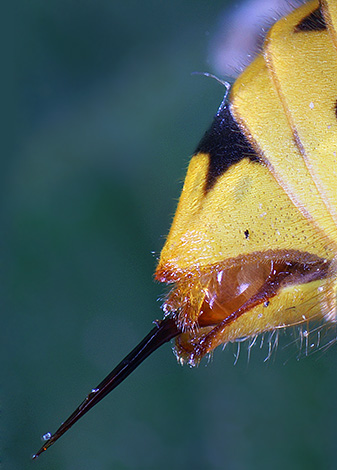
However, in nature, it is very difficult to distinguish male paper wasps from females outwardly, and it is usually not possible to guess which insect can sting and which one does not. In addition, in ordinary social wasps, males are extremely small, appear only at the end of summer or early autumn and live only two or three weeks. So most of the wasps encountered are precisely the females that have a sting.
On a note
Each wasp has only one stinger. Theoretically, the loss of this organ alone is not fatal to the insect. However, in real conditions, it does not lose it, since the smooth walls of the sting make it easy to remove it from the victim's body and use it repeatedly.
How the sting works when attacked by a wasp
The sting comes out of the belly of the insect exactly at the moment when the wasp stings. After the attack, the insect may not hide the sting and inflict one or more "strike" on them.

Of course, for a successful sting, the integument of the victim's body must be softer than the sting itself. For this reason, wasps rarely hunt beetles that are well protected by hard elytra, but spiders, even very poisonous and dangerous ones, are very skillfully paralyzed with their poison:
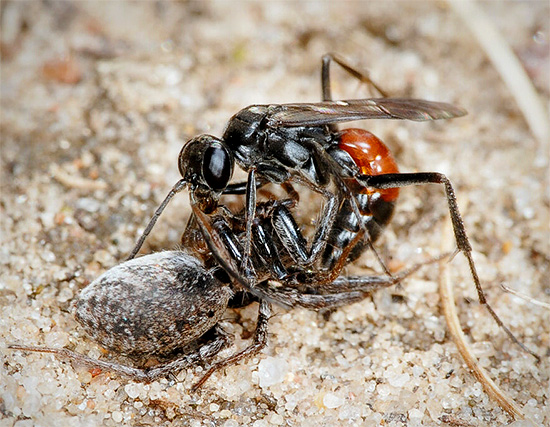
After the introduction of poison into the body of the victim, the wasp easily takes out the sting and, depending on the situation, either hides it and flies away, or stings again. An insect can draw its weapons from the bodies of insects and spiders, as well as from the skin of humans and other warm-blooded animals, absolutely freely. This is the main difference between a wasp sting and a bee sting: the wasp does not leave a sting after the bite.
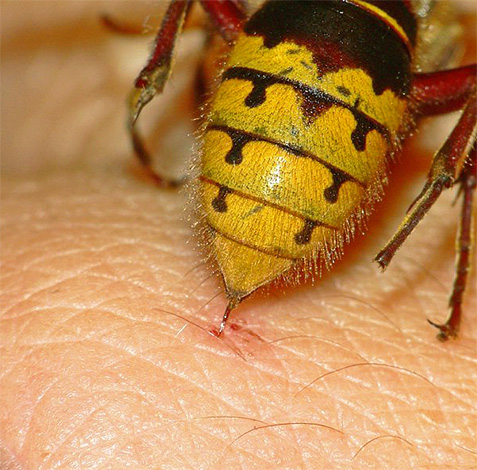
A wasp can sting about 4-5 times in a row. At the same time, in one bite, she injects an average of 0.3-0.4 mg of poison into the body of the victim (and large hornets and scoli can inject up to 0.7 mg).
Wasp sting in the skin: is it possible?
Considering that wasps do not leave a sting in the skin of a bitten person, situations when their weapons have to be pulled out of the wound are practically excluded.
All cases of stuck and torn off stings are related to bee stings. By the presence of this organ in the skin of the victim, one can easily distinguish a wasp sting from a bee sting: if there is no sting, then the wasp has bitten, and if there is, then the bee. By this sign, you can confidently judge who nevertheless stung you.

Speaking of stinging, it is worth talking about how you can pull the sting of a bee out of the skin without causing additional harm to yourself.
There are two main and most used methods:
- The safest way to remove a stinger is to carefully remove it with a needle, keeping in mind the following important point. The bee leaves its sting in the wound along with the poison gland (and part of the intestine), and the walls of the poison sac continue to contract, introducing more and more toxins under the skin. Therefore, the faster you manage to remove the sting, the less pronounced the consequences of the bite will be.

- It is also possible to remove the stinger with tweezers or fingernails, but this method is much less preferred. The fact is that in this way you will squeeze out an additional amount of bee venom into the wound - both from the sting itself and from the poison sac connected to it. But if there was no sharp object at hand, then you can simply grab the sting with your nails as close to the surface of the skin as possible and remove it.

It is impossible to leave a bee sting in the skin - not only because of the receipt of additional amounts of poison under the skin, but also simply because after a while the wound may fester.
As for wasps and hornets, in general, we can thank them for the fact that they do part of the work of neutralizing the bite themselves, without leaving a sting in the skin and flying away with it.
Different wasps, different stings, different bites
Despite the fact that almost all wasps have a sting, the stings of different species vary significantly in strength (pain) and consequences. The difference is determined by the effect of the poison on the human body.
For example, the venom of giant Asian hornets is highly allergenic and often leads to anaphylactic shock. Multiple bites from several of these hornets at once can pose a risk to life even in people who are not prone to allergies.
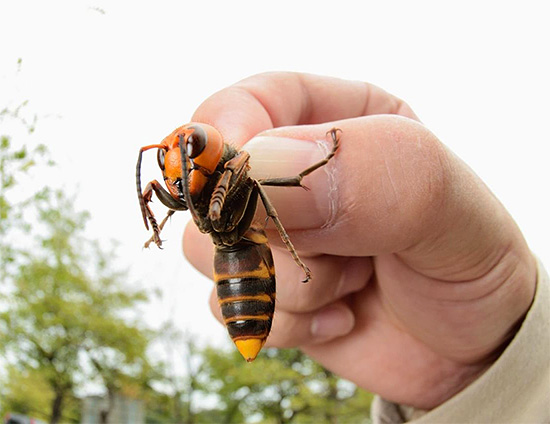
Scolia, which are not inferior in size to hornets, sting, on the contrary, very weakly. Their venom is designed to paralyze sedentary and harmless prey - beetle larvae - and therefore it causes almost no pain in humans, but only leads to slight numbness of tissues.
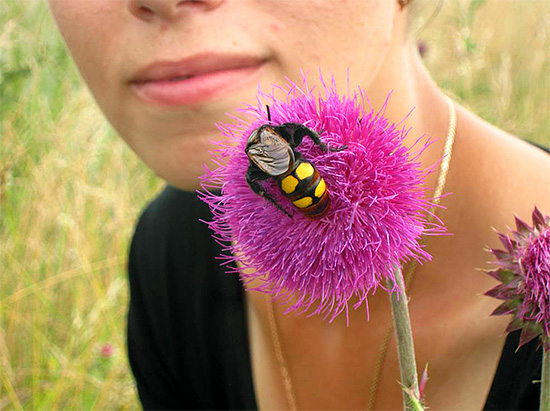
Stings of road wasps, many species of which prey on tarantulas and other poisonous spiders, cause very acute pain in warm-blooded animals. In terms of pain, their bites are among the most powerful insects in the world.
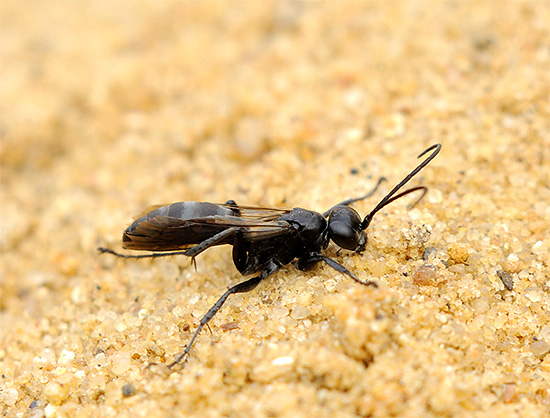
And, for example, the osfilants known to beekeepers who hunt honey bees have a sting that is too thin and is often simply not capable of piercing the rough skin on the palms of a person. Therefore, although philanthropists sometimes sting people, beekeepers boldly catch them with their bare hands, not being afraid of bites.

It is important to remember that wasps almost always sting a person in self-defense or when protecting a nest. Being disturbed, these insects first of all try to fly away, and only when they are in a critical situation (especially pinned down), they resort to extreme measures and sting.In addition, if the insects think that a person has come too close to their nest, they may collectively attack to drive away a potential offender.
That is why in nature or a summer cottage, in order not to be stung, it is enough to be attentive, not to make sudden movements in the presence of wasps and hornets and look around. If there is a nest nearby, you should go around it, and if the insect accidentally sits on the body, just brush it off, but in no case slam it. Such accuracy in most cases is quite enough to avoid bites.
Interesting video: a road wasp fights a tarantula spider

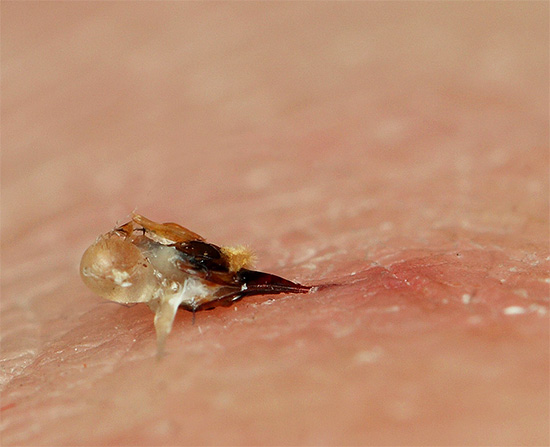
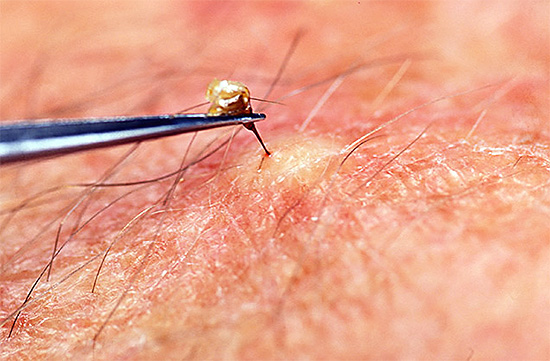



Still, wasps sometimes leave a sting in the same way as bees. In my life there was at least one such case, and 100% it was a wasp, not a bee.Moreover, it seems that insects do not pull the sting out of themselves (they simply would not have had enough strength for this), but discard it with the help of special muscles, just as lizards discard their tail.
I agree with Yuri, today a wasp stung, but left a big sting. It’s just that in the place where I was, a lot of donkeys fly, and they didn’t see bees.
Absolutely agree. Yesterday, in nature, a wasp stung, at home she found a sting at the site of the bite. Plus, bees don't fly where wasps do.
Urban what? Bees and wasps can be seen together on cut watermelons, melons, or on water containers. I was stung a hundred times by both wasps and bees - only bees left a sting (I distinguish a wasp from a bee).
Once, when I was still a kid, I was riding a bicycle from a hillock, a wasp jumped under my shirt. I jumped off the bike like a real Cossack, and he rode on. While taking off his shirt on the run, she stung me eight times and did not leave a single sting. I threw my shirt on the pavement and let's jump on it, hoping to crush this creature. To my surprise, that bitch wasn't there.